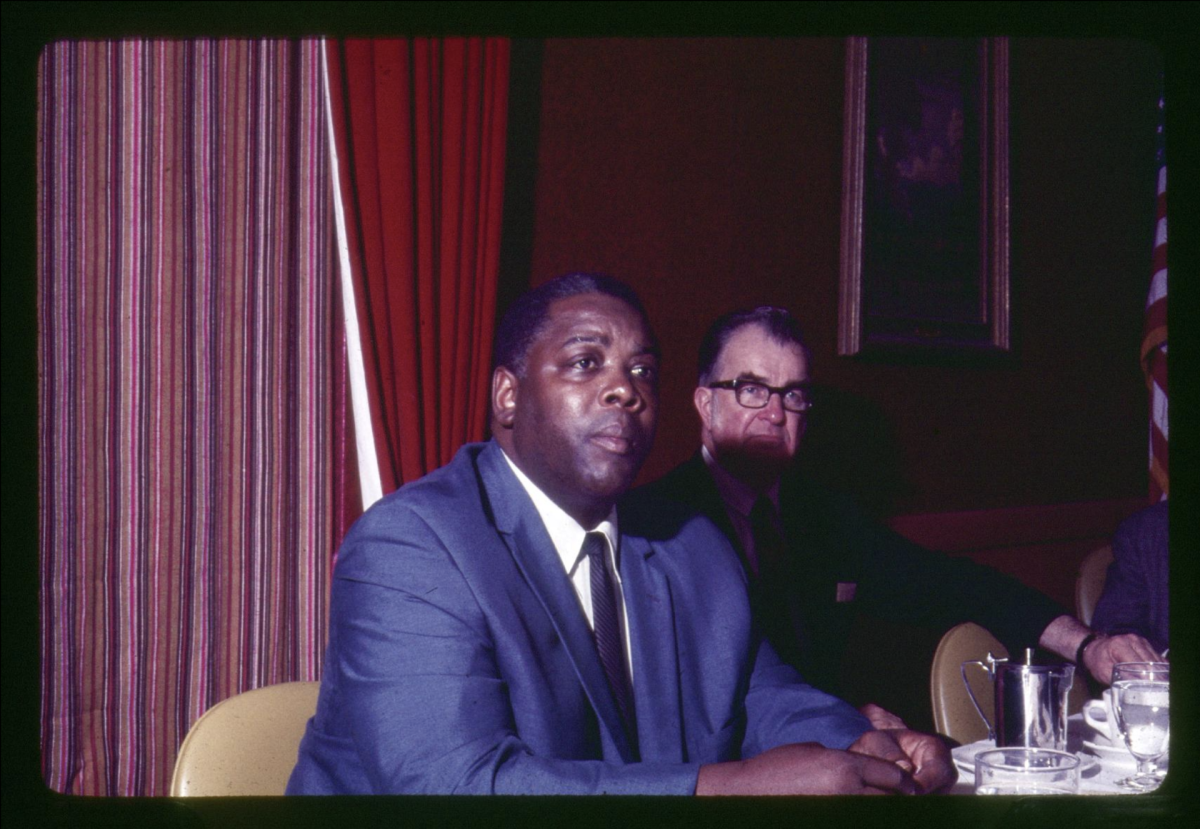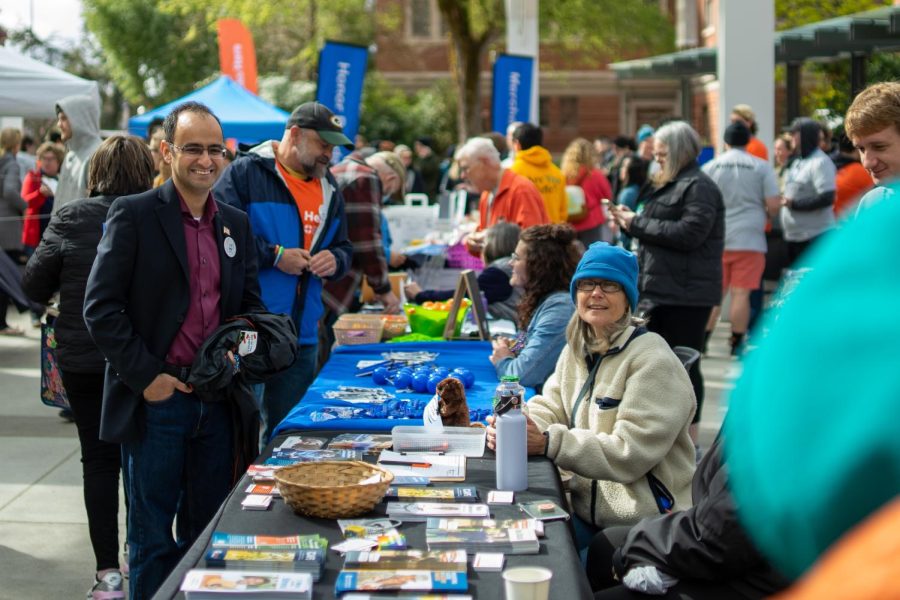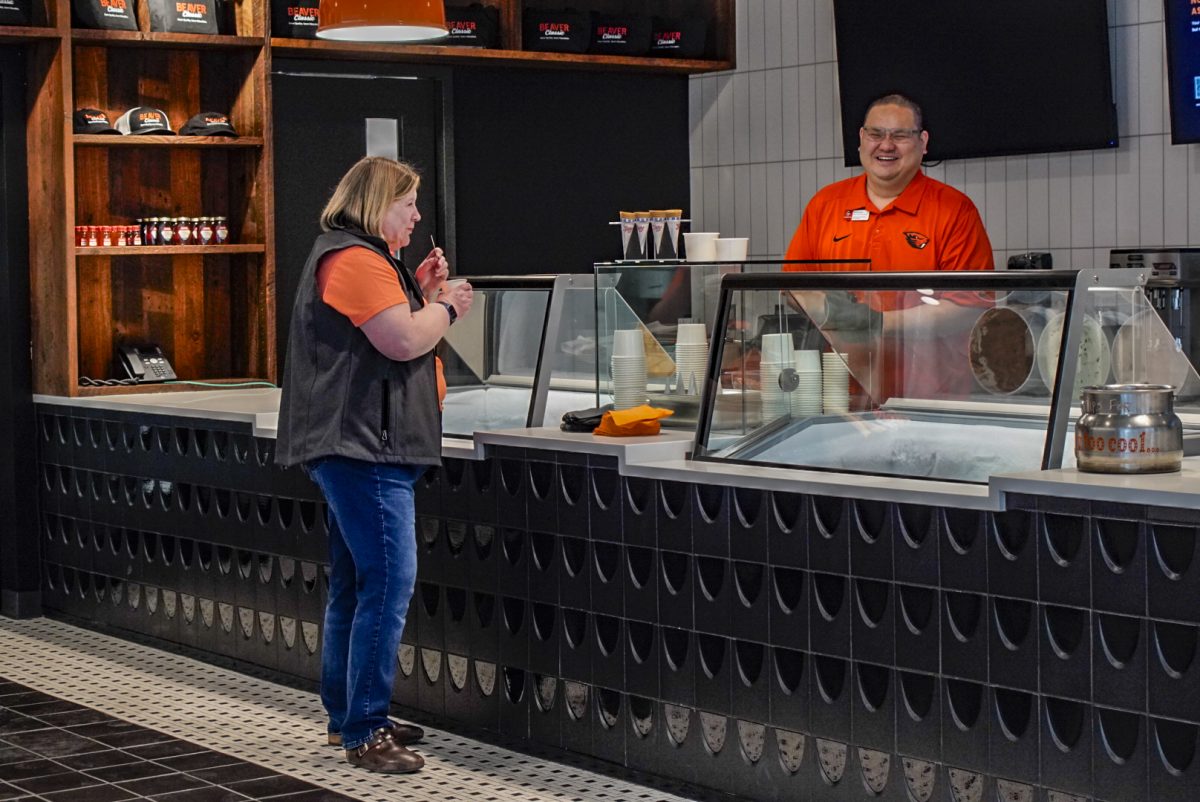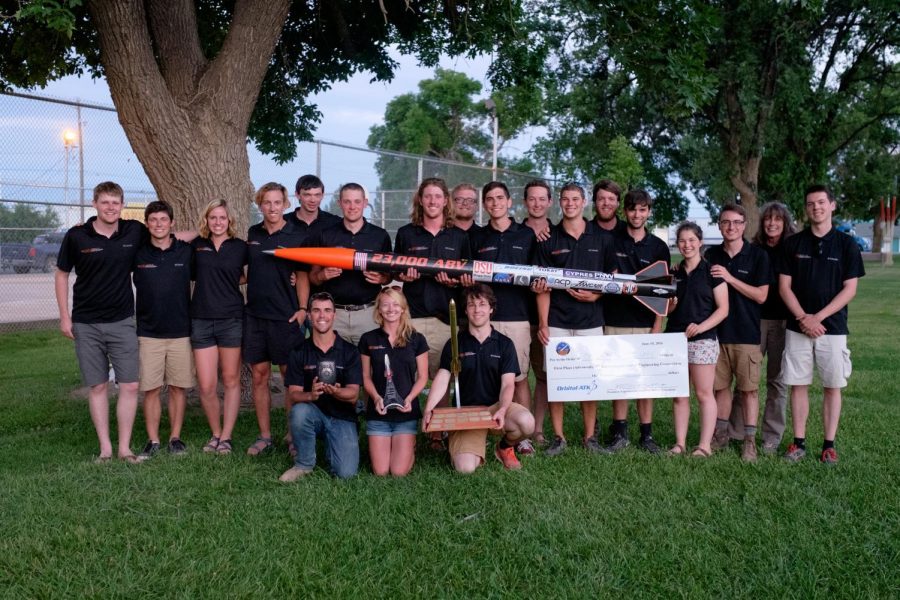Flying high
June 30, 2016
OSU club take first place in rocket competition
Three, two, one, ignition. Corvallis, we have a winner.
The Oregon State University branch of the American Institute of Aeronautics and Astronautics (OSU AIAA) is flying high.
21,190 feet to be exact.
Competing at the 11th annual Experimental Sounding Rocket Association Intercollegiate Rocket Engineering Competition (ESRA IREC) earlier this June, the OSU AIAA team took home first place in the Advanced Category, and was awarded $1,000 for this accomplishment.
This year’s team was required to design and build a rocket capable of carrying a 10 pound technical payload to 23,000 feet above ground level, as well as have a student built propulsion system, according to Evan Bassford, a member of the OSU AIAA.
In addition to this, the team also gave a technical presentation to a panel of judges consisting of aerospace engineers and rocket scientists.
This year’s rocket achieved an altitude of 21,190 feet, according to Bassford.
The team, which was funded by the Oregon NASA Space Grant Consortium, spent four days in Green River, Utah, from June 15 to June 18, competing against teams from the US and countries all around the world, including Brazil, Egypt, Turkey, Canada and several others.
To view this year’s official competition results, click here.
This year’s payload, which is loosely defined as anything carried by the rocket, was designed as an autonomous self-guiding ram-air parachute payload, according to Bassford. The payload was ejected from the rocket at apogee, the point at which the rocket was at its highest altitude, and was programmed to guide itself to a predetermined location.
Due to extreme winds however, the team was unable to recover the payload.
According to the ESRA IREC website, this year’s competition saw 52 teams compete, which equated to around 560 people. Sponsors of the competition included major aeronautical and astronautical companies such as SpaceX and the Northrop Grumman Corporation.
The OSU team consisted of 15 seniors that were further broken down into five sub-teams; integration, propulsion, aerodynamics and recovery, payload and avionics. The team had been working on the rocket and preparing for competition over the last nine months.
The team of seniors designed the rocket as part of their engineering senior design project, but also received help from several underclassmen during the designing, manufacturing and testing processes. The rocket had also undergone two test flights prior to the competition, both done in Brothers, Oregon.
In a Barometer article from October of 2015 titled, “Rocket club aims for the stars, prepares for competition,” Bassford explained that teams are scored in part due to how much of the rocket is built in house. Because of this, the AIAA team made all of their parts in house he said.
The OSU AIAA came into existence in 2013 and the current adviser is Dr. Nancy Squires. In the 2014 competition, OSU took home first place in both the payload competition and the desired altitude competition, and in 2015, they took third in the desired height in the Advanced Category and again won first place in the payload competition.
To read the Barometer article from October of 2015 about the OSU AIAA team and the work they do, click here.
Bassford, who graduated from OSU with a degree in mechanical engineering this June, has been a part of the OSU AIAA team since its founding. He encourages anyone who may be interested in getting involved with the club to contact the club president, Karen Kuhlman, or visiting the website, and emphasized that the club is always looking for new members.
The OSU College of Engineering recently instituted an aerospace minor, in part due to the success and student interest the AIAA team has generated over the last few years, Bassford said.
For more information on how to help or join the OSU AIAA team, click here, or contact the club president, Karen Kuhlman at kuhlmaka@onid.oregonstate.edu.
For more information on the Experimental Sounding Rocket Association, click here.




















































































![Newspaper clipping from February 25, 1970 in the Daily Barometer showing an article written by Bob Allen, past Barometer Editor. This article was written to spotlight both the student body’s lack of participation with student government at the time in conjunction with their class representatives response. [It’s important to note ASOSU was not structured identically to today’s standards, likely having a president on behalf of each class work together as one entity as opposed to one president representing all classes.]](https://dailybaro.orangemedianetwork.com/wp-content/uploads/2025/03/Screenshot-2025-03-12-1.00.42-PM-e1741811160853.png)























